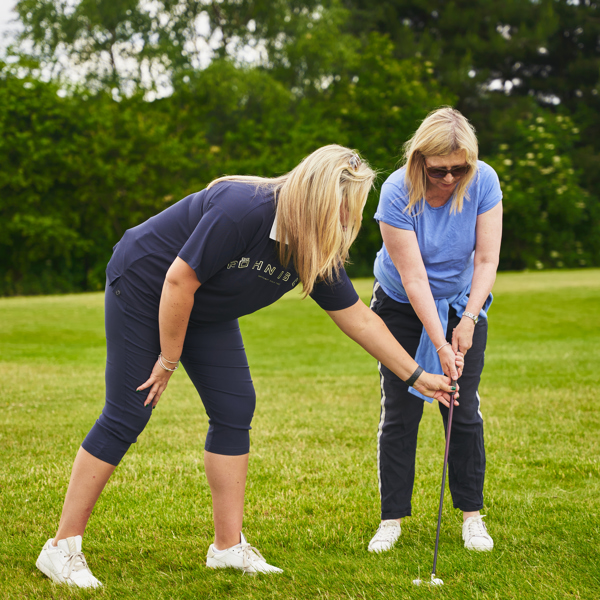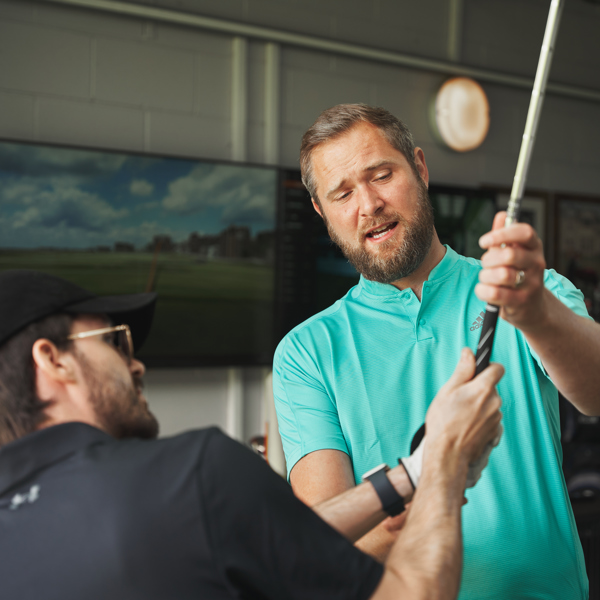Sunningdale's Tom Reid outlines how a golf lesson works from the initial greeting to what happens after the lesson.
The lesson always begins with an enthusiastic greeting, I want the student to know I am excited to see them!
It then moves onto questions, I ask so many but, the more I know, the more I can help. I will constantly remind them that they can ask questions at any point in the lesson.
I will ask about their learning style which helps to communicate more efficiently and for me to understand their background and time constraints and, this way, you’re always pushing them to their limits in the right way. A lot will depend on what the student wants; I have players who want a lower handicap, some who want to hit the ball longer and some who want to cure their chipping yips etc. So essentially we set very clear personal goals and objectives during the first lesson and put all of our combined energy into achieving these things.
When they’re hitting shots I will look for their swing pattern, listen for their feels and really try and understand what makes them enjoy and play their best golf. Each golfer is unique and without identifying their patterns and quirks I cannot coach them as well as I'd like – so I'm coaching the student and not the swing. An important thing to ascertain is what shot shape the player sees and has played their best golf with, it’s so important to find the golfer's winning formula and then put all our efforts into that.
In terms of analysis I will always use a launch monitor and camera while firing questions at them, this way we can quantify what we are seeing and what they’re feeling so there is total transparency to the whole thing. Students learn best when they’re engaged and have feedback on their progress, as they see improvement it motivates them to work harder.
I save all video and club/ball data on TrackMan software so we have a timeline of progression and this is hugely important for both sides. We are both accountable for the development and this is also important for blueprinting – if the student arrives in fantastic form then we can template this, then we can revert to what’s successful if a player loses elements of their game that have historically been stronger.
We will also revisit the previous lesson, I want to know how well they remember the content and how they feel about their game since. Once we’ve discussed whether they have achieved all the goals set we can either move on or perhaps we will need to carry on what we are working on in a different way to help them progress.
I will end all golf sessions with a form of summary, usually this is a voiceover/screen cast which I record while the student is next to me for extra clarity. I also offer my phone number and say if you need anything message me, you don’t always have to book in to talk.
I don't have control over a student's actions between sessions but this by putting in place some solid practice regimes and proper in-between lesson communication there will be far less issues.
About Tom Reid
Tom became a PGA Professional at Wentworth Club in 2011, and in 2013 he became the club's first Junior Academy Manager, setting up a teaching programme for 3-12 year-olds. In 2016 he became only the second person in Europe to be receive a Top 50 US Kids coach award. In 2017 Tom became the Senior Teaching Professional at Stoke Park Golf & Country Club, during this time he helped re-structure the junior scholarships programme and integrate the European headquarters for Leadbetter Golf Academies after spending time in the US training with David Leadbetter and his team. Tom works with several aspiring Tour players but enjoys coaching players of all levels, Tom still loves to play and compete.







